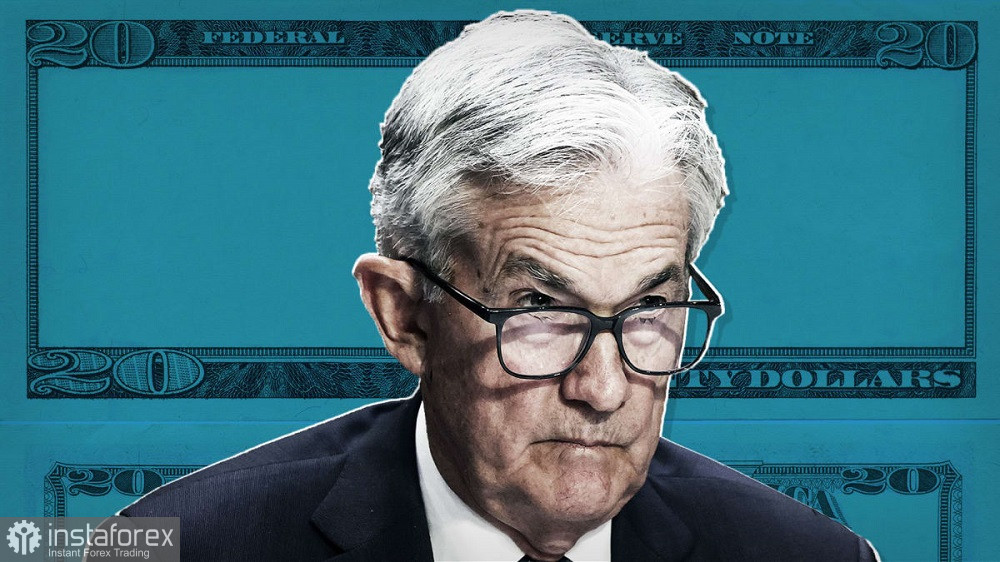The Fed Chairman Jerome Powell's speech at an international symposium hosted by the Bank of Sweden was the most anticipated event of the day on Tuesday. Many traders' aspirations, however, were unfounded because the chairman of the Federal Reserve did not stray from the specified subject, which was centered on the Central Bank's independence as a state institution. Powell maintained the suspense on many topics by avoiding commenting on the most recent macroeconomic reports and generally ignoring the "interior kitchen."

And the Fed chairman is the subject of many inquiries. Recent developments in the market's information background have not been favorable to the US dollar. Although the majority of the report's labor market components came out in positive territory, the December nonfarm and ISM indices were seen as being negative for the US dollar. Many traders and professionals contend that all the necessary circumstances have currently been established to lower the rate of a rate increase to 25 points. Several analysts are also optimistic that the regulator will lower the top limit on the current cycle's final rate, which is currently set at 5.1%. A dovish situation like this is not supported by all Fed members, but it should be highlighted in the future. Nevertheless, the flywheel of "dovish expectations" has started to swiftly unravel since last Friday, notwithstanding the undeniable immaturity of such judgments.
According to the CME FedWatch Tool, the probability of a 25-point rate increase in February was 55% before the release of Non-Farms; this week, that probability is assessed to be 77%. Actually, because of this, the dollar fell across the board on the market, especially when trading against the euro. The seven-month price limit for the EUR/USD pair has been adjusted and is now set at 1.0763.
The reasoning behind EUR/USD buyers is straightforward and convincing: against the backdrop of a reasonably robust labor market (recall that the US unemployment rate has dropped to 3.5%), the pro-inflationary factor (the salary component has been declining for several consecutive months) is gradually fading. The consumer price index, the core PCE index, and the ISM price component all exhibit declining patterns in terms of inflation. The dollar bulls' detractors claim that all of this suggests that the Fed may take more cautious action when raising interest rates. Additionally, the Fed might lower the highest rate value.
But in this case, the important word is "maybe," which by its very nature suggests the other possibility. Additionally, this week, a few Fed officials made some hawkish remarks. For instance, Mary Daly, the president of the Federal Reserve Bank of San Francisco, predicted that the rate could be raised by 25 basis points or 50 points at the meeting in February. She also challenged the assertions made by several experts that the regulator is prepared to change the final bid's level. Daily projections indicate a peak at a rate of 5-5.25% annually. She further stated that the US inflation rate will not fall to the desired two percent level in 2023, which will delay the Fed's rate-lowering actions until at least 2024. Rafael Bostic, the chairman of the Federal Reserve Bank of Atlanta, and a colleague of Daly's had a similar viewpoint. Since "it is too early to declare victory over inflation," he added, "the rate will remain above the five percent mark until 2024."
As you can see, it is still too early to dismiss the Fed's "hawkish stance." By the way, the preceding quotes from Daly and Bostic halted the purchasers' march to the edges of the eighth figure. The resistance level of 1.0750, which corresponds to the upper line of the BB indicator on the daily chart, was the area where the pair came to a stop.
With such a mindset, Jerome Powell may very well play the role of an arbitrator by bolstering or deflating dollar bulls. But by staying "above the fray," he kept the mystery surrounding his stance on the aforementioned topics alive.
The circumstance puts the important macroeconomic release of this week front and center: the release of statistics on US inflation growth. The general consumer price index is expected to rise to 6.5% y/y (it was reported at 7.1% in November), and the core index to 5.7% y/y (it was released at 6.0%). The dollar will come under pressure once more if the real statistics match projected projections (not to mention the red zone), as it will be feasible to confidently discuss the persistent trend of reducing inflation in the United States. In this scenario, the market will draw its own inferences about the likelihood of reducing the rate hike; Powell's "silence" and some Fed officials' bullish comments will no longer support the dollar. The position will be reversed, though, if the inflation report is published in the positive territory: The EUR/USD pair will depend heavily on the Fed's remarks, particularly those of Jerome Powell.
Therefore, it is advised to adopt a wait-and-see attitude prior to the release of statistics on the growth of inflation in the US for the pair, as this release will undoubtedly cause price volatility; the only issue is whether it will be in the favor of buyers or sellers of EUR/USD.
 Bahasa Indonesia
Bahasa Indonesia 
 Русский
Русский English
English Bahasa Malay
Bahasa Malay ไทย
ไทย Español
Español Deutsch
Deutsch Български
Български Français
Français Tiếng Việt
Tiếng Việt 中文
中文 বাংলা
বাংলা हिन्दी
हिन्दी Čeština
Čeština Українська
Українська Română
Română

